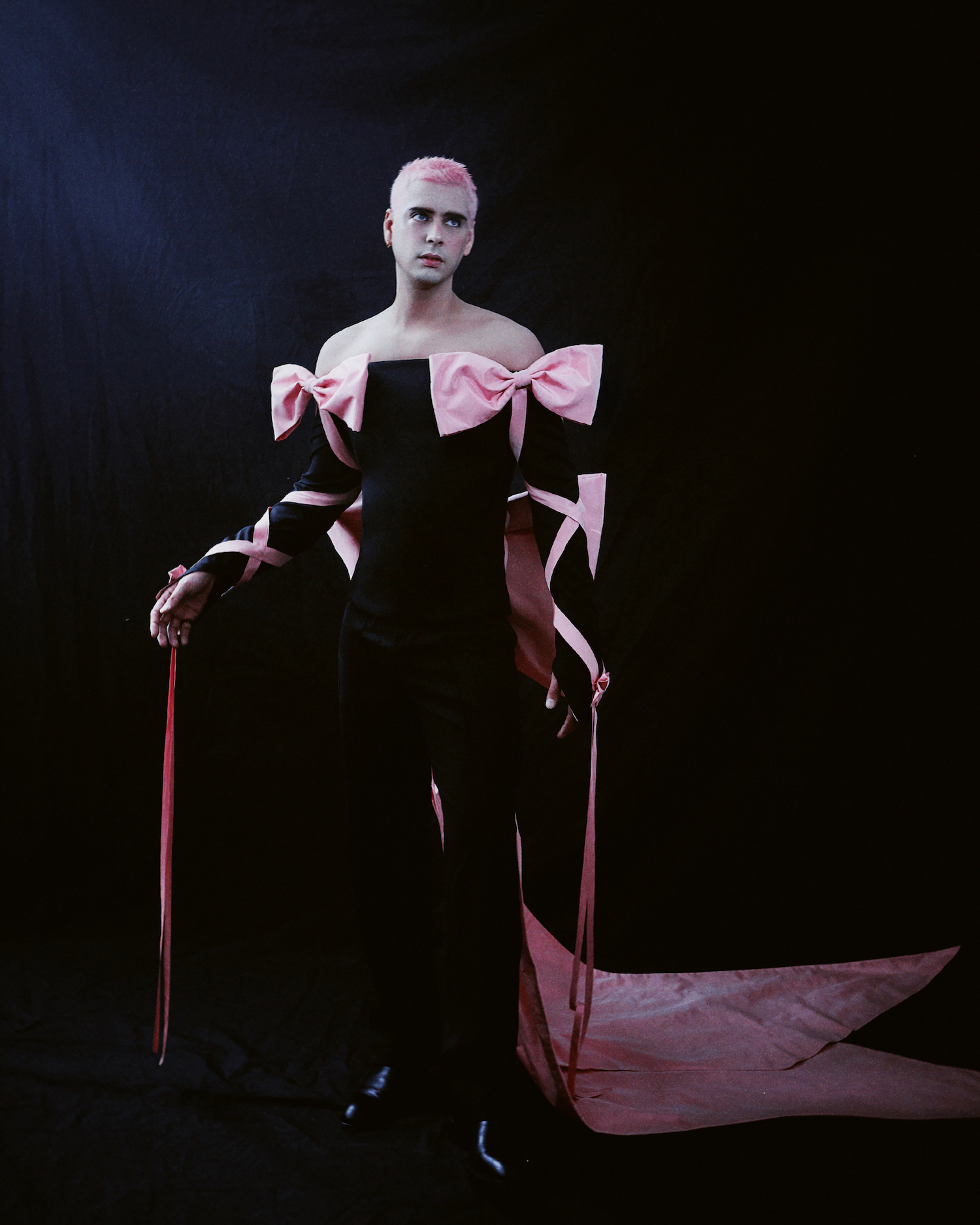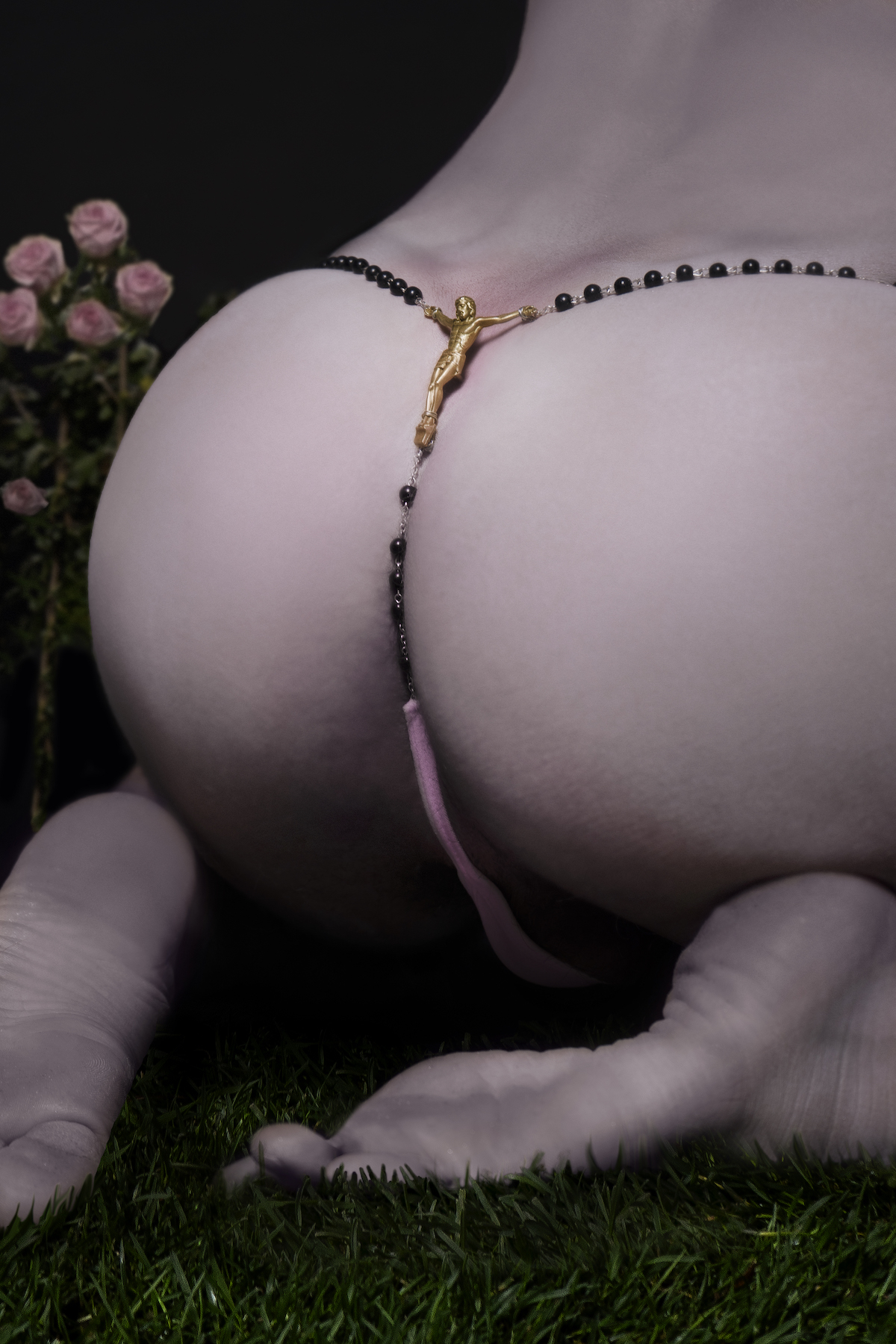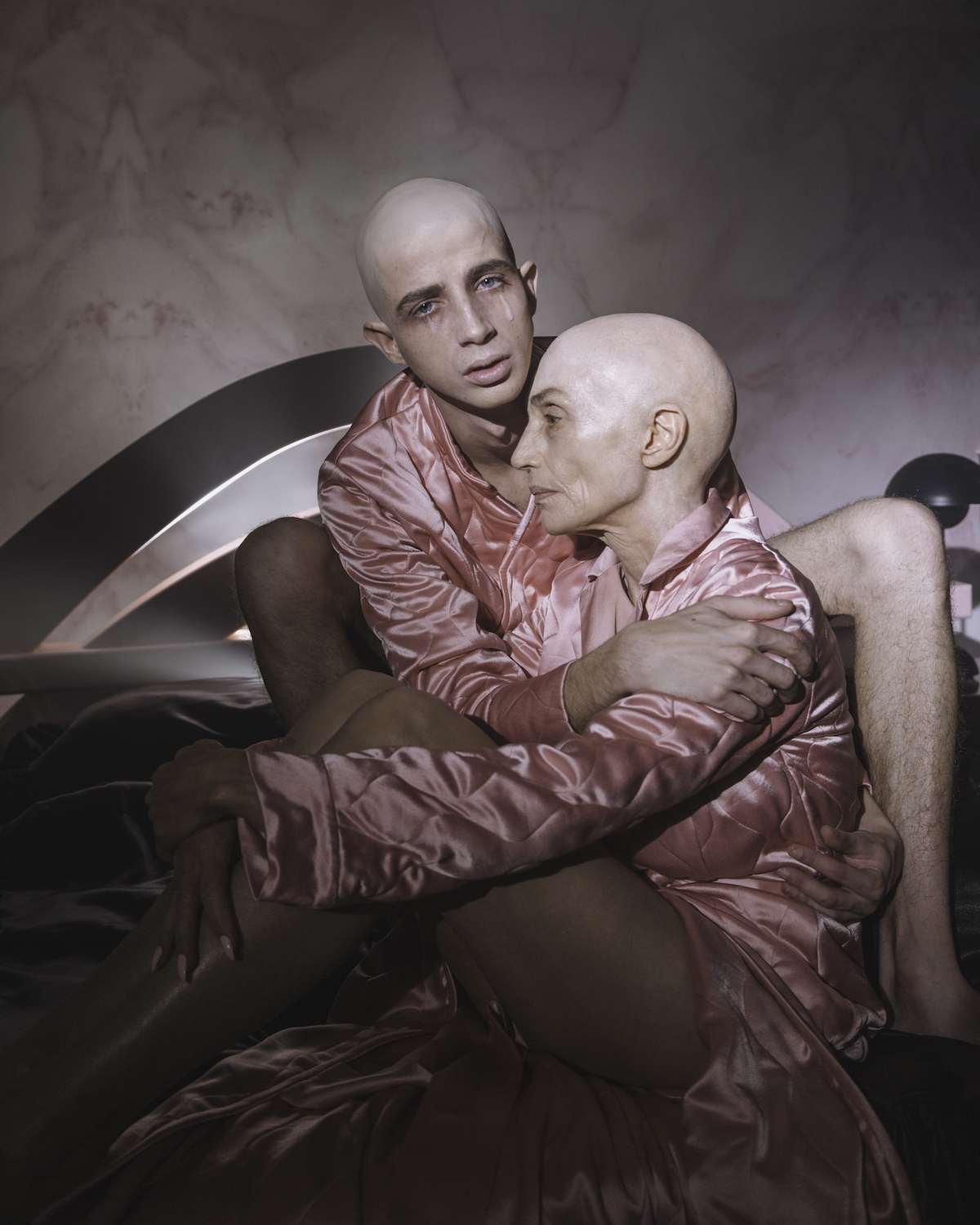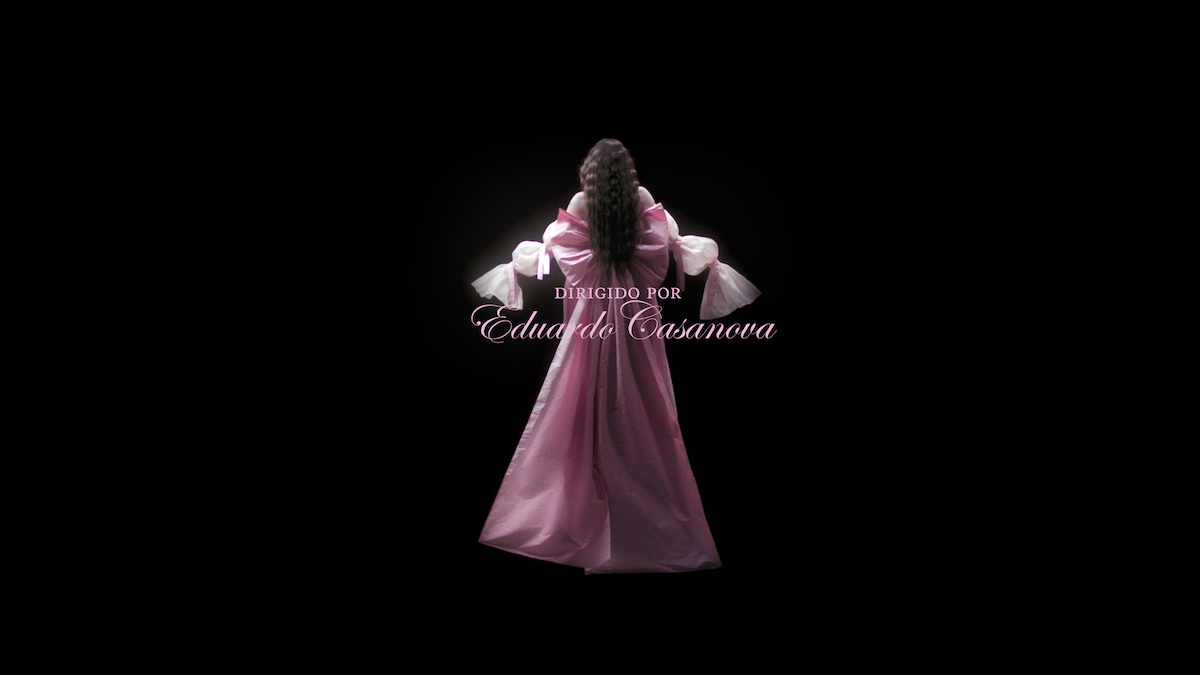A knife in a strawberry cake

Eduardo Casanova masterfully forms horrific bodies, bestowing corporeal knowledge through his pink-clad cast. Having emerged from the depths of his mind, the eye of his camera captures stories—fictional and otherwise—of those forced to the margins. His work finds beauty in the discomfort of power relations, oscillating between the strange and the intimate. Casanova’s cinematic world emerged through short films and has grown into full feature movies. From his debut Pieles and his sophomore offering La Piedad (Piety) to his upcoming works, the filmmaker is leaving an undeniable mark on Spanish cinema. At the dawn of many new projects, Glamcult caught up with the artist to peek inside his mind, uncovering the roots beneath the surface of his oeuvre.
How are you doing today?
Nervous. Lately, when I wake up, I can’t see clearly. With my eyes, I mean. Everything is blurry. It’s difficult to focus. Now, after breakfast—without caffeine; I don’t tolerate it well—I’ll take my medication and give writing a go for a while. Writing is cumbersome, it scares me. I write every day. I’m sick of it. Being an artist is a bitch. It’s like being a broken computer. But even though it doesn’t look like it, I am also happy—but this could be due to the medication.
I suppose it comes with the job? Looking back at your creative journey, how would you define where you are right now?
Currently, I am at my best professionally speaking. I’ve got lots of projects lined up. The journey is long and tiring. Mostly tiring… but there are moments of extreme happiness. Really, my objective is to pinpoint those happy moments along the way and enjoy them. I believe I may be at the brink of starting to enjoy the journey. That’s the complicated part of this profession. The writing, the funding, the pre-production, promotion—they are like little wars. Wars that seem very important, they suck the life out of you, but really, they are totally irrelevant. This profession is as beautiful as it is absurd, important as it is unnecessary, necessary and impossible.
Amid these ‘little wars’, you maintain a strong audio-visual language. How did you define this personal aesthetic?
I haven’t got a clue. Things come out of my head intuitively. I try to analyse and explain it all. Occasionally, I find an explanation and when I don’t, I try to at least capitalize them so my style can be recognizable and make me money. But while my style is definitely recognizable, it still makes me no money.
Was there a moment where it really fell into place?
To be honest, it never all fell into place. But I’m great with making it look like it did.
Fake it till you make it… Where do you find inspiration outside of film?
Outside of film, my prime inspiration is people in general. I love photographing and recording them. Listening to the conversations at the table next to me. I record mini documentaries constantly. My book, Margenes, was a big effort to find inspirations in the lives of others, even though, perhaps unconsciously, I end up applying these stories to what happens to me. Because in the end, the same things happen to all of us.


From horror to drama, your films naturally glide across genres. But within these genres, your work resides in this kind of new wave of extremist cinema. Can you talk a bit about this? Why do you go for the extreme?
Oh really? I have no idea! Really, I don’t know what I’m doing. It comes out on its own. I don’t centre myself on genres. Okay—that’s a lie, I always try to do horror films, but it turns into something different. One of the biggest challenges I face is to control what I do, but the artistic impulse is not something you can control. What comes out, comes out. I think as an author you don’t work with genre; you create your own genre.
But within the genre you craft, why do you gravitate towards exaggerated representations of bodies? Is it perhaps a way to explore new dimensions?
Well to me, it’s not extreme. It’s like when I cook: I always use too much salt and when I taste it, I love it, and sometimes even add more. Then I throw it all up because it doesn’t sit well. I think there is a simile somewhere in there. You can’t measure or analyse art; you can only feel it. That being said, I love body horror films. For me, the body— or better said, the representations of dissident bodies or the unreal prosthetics I use in my work—are poetic metaphors of what happens inside of the characters. Example: a silenced woman who dares not speak. Prosthetic? An asshole instead of a mouth.
These hyper-representations very much evoke bodily knowledge. Your visceral depictions of the body form affective relationships with the viewer’s corporeal self. What do you hope to make your audience physically feel?
I’d love it if someone fainted while seeing a movie of mine, the emergency services called, causing a big ruckus. I’d love to create something artistic that would cause very intense feelings among the spectators. I think the only purpose of art is to cause new sensations. To act as a drug. Something that moves you or puts you off balance. Something that makes you feel. If we don’t feel, we die. Even if those feelings hurt. I am also drawn to the idea of creating an image that will reside permanently in the spectator’s head. I see art as a tool to overcome fear and mortality; a means to create something permanent that renders you eternal, in a way.
And film gives you the medium to do just that… Getting into your films themselves, you started your career mostly in short films and more recently shifted to full-length features. Any growing pains with this transition?
It’s more challenging to make full features. Not just because of the time it takes and the financial aspect, but it’s the total opposite of short filmmaking. Full features have a commercial path, which is not the case for shorts. A short film can stand freely on its own—well, considering that there is no such thing as freedom. With a full feature you must double your effort first to satisfy yourself and the audience. I wish short filmmaking was more dignified. On the other hand, if it became an industry of its own it would be stripped of its radicality.

Pieles was an expanded version of one of your earlier short films, right? What was it like translating it into a full feature film?
The original intention was to make it a full feature. I was pushing the idea with the short Eat My Shit without having written Pieles yet. I was literally stringing ideas together as I was convincing my producer. The script was secondary. The motivation was to do something risky and different. That’s the essence of Eat My Shit and the essence of my first film. I didn’t care much about what the movie was about; rather, I was focused on making the leap onto the big screen and doing something different. I think we were lucky the movie was successful—or at least a milestone in my career and in the film industry in my country, which is exactly what I wanted.
There’s a clear power struggle in Pieles, where the characters are forced into the margins. How far is this fictional film a mediation on the current power structures we all find ourselves in?
Exactly! This film talks about the fact that we are all victims of an aesthetic dictatorship, among other things. It’s impossible to be yourself. Pieles talks about all that one must do to be oneself. This is why the film has such a bittersweet ending. I repeat: it’s impossible to be yourself. It’s too late.
Your next film, La Piedad, is in some ways the total opposite. Rather than the characters being alone, it’s about an extremely close—toxic, even—mother-son relationship. How do you think Pieles and La Piedad enter into conversation with each other?
I think the two films actually discuss the same thing: people under a dictatorship. A dictatorship perpetrated by a mother or Kim Jong-il in La Piedad or by social pressure in Pieles. My movies always talk about the system, trying to understand how something so cruel and nasty can be so pop, kitsch, camp and fascinating. I inevitably see the beauty in horror and try to understand the antagonist in my movies. The ‘bad guy’ is always the system and I believe that in a script, failing to understand the antagonist is to make Disney movies.
In the film, this relationship is paralleled with North Korea’s totalitarian regime. What led you to North Korea?
North Korea: a place where horrible things are perpetrated by the system, where everything is pretty and in pastel colours. That’s what my movies are about: horror wrapped in gift paper. A knife in a strawberry cake.
As you mentioned, there’s a strong aura of camp in this film. Let’s talk about it.
Camp or kitsch is the basis of my aesthetic—well, at least for now. For my narratives, camp is crucial because it brings humour. Without comedy, it’s impossible to manage drama. But also, camp speaks to you directly. It’s basically rooted in the idea of trying to be what you are not, and that makes you feel the way you really are: trying to be someone else while life unfolds.
You also do commercial work without sacrificing your visual language. How do you get away with that?
By lying to the client.
Ha! So, you have a new movie coming up. Can you talk us through the project?
I have several new projects. Where do I begin? The most recent one, Al Margen, is the first documentary I wrote, filmed and produced on my own. Something totally different from my previous work. You could say it’s an extrapolation of one of the characters portrayed in my book, Margenes. It’s a story of a burn victim in search of an image of his face before he got disfigured. How did he get disfigured? Did he set himself on fire? Did someone else do it? It’s a true story that took place in Spain some 11 years ago. I’m also preparing to shoot a remake of Bigas Luna’s Angustia, one of my favourite movies. It will be my first mainstream movie. But relax: I’m sure it won’t be.
We can’t wait for it to come out. Good luck with the release! What are you manifesting for the rest of 2024?
Write, write, write and get some FUCKING rest.
Words by Ella Paritsky
Images courtesy of the artist
THE HARD CANDY ISSUE – OUT NOW